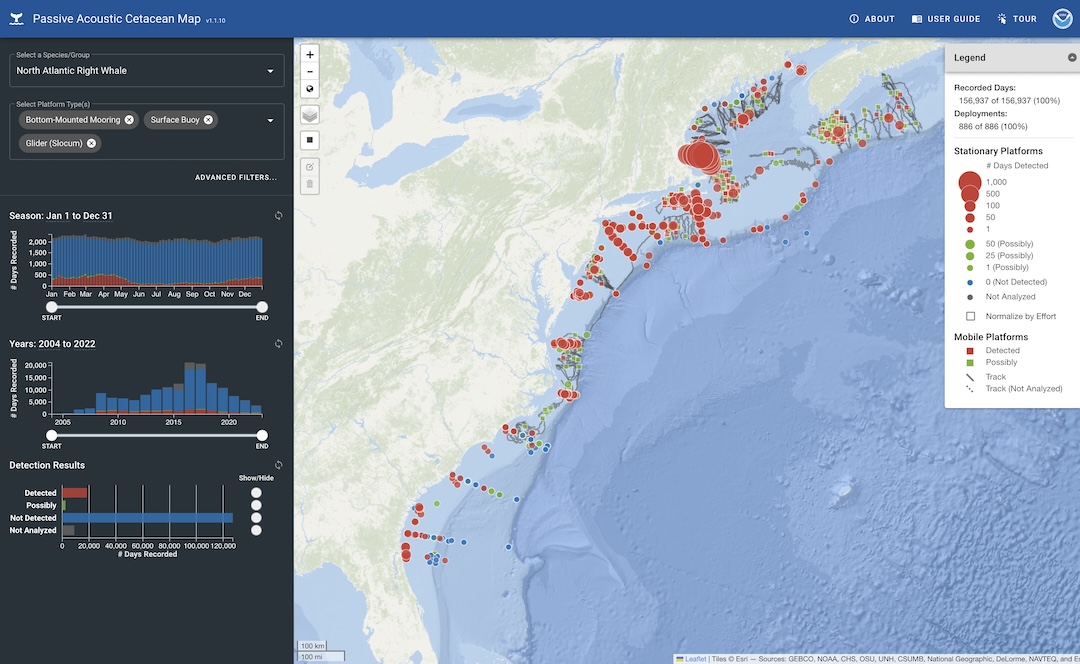Listen:Do you hear that?
Passive acoustic technologies allow us to study the behavior and movements of marine animals, their contribution to the ocean soundscape, and how they are affected by human-made sounds.
This website provides tools for storing and visualizing passive acoustic monitoring (PAM) data of the ocean.

Passive acoustic technologies allow us to hear what we cannot see.
Marine mammals and some fish and invertebrates produce and listen for sound in the ocean. In an environment where vision is limited, hearing is one of the most important senses. These animals rely on sound for navigating, socializing, establishing dominance, attracting mates, avoiding predators, and finding food.
At NOAA Fisheries, we use PAM to study these animals. This information is important for helping us make decisions about how to protect our marine populations and gain a deeper understanding of their behavior.
Learn more about passive acoustic research in the Northeast.
Passive Acoustic Cetacean Map
PACM is a data visualization tool for exploring the spatial and temporal patterns of PAM-based acoustic detection data of cetacean species. A series of interactive charts coupled with a dynamic map can be used to view detections over different seasons, years, and areas.
Open PACMMakara Data Portal
The data portal is a user-friendly interface for uploading and managing PAM data using the Makara database. The data portal is currently under development and will be made available to NOAA staff and collaborators.




